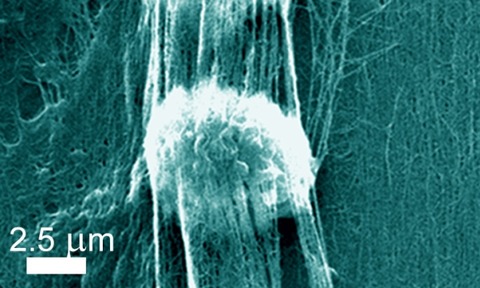"Scaffold" technique used in stem cell growth
6 Feb 2014

A team led by scientists from the University of Surrey have developed a method for growing human embryonic stem cells that does not rely on supporting human or animal cells.
In collaboration with Professor Peter Donovan at the University of California, the Surrey-based team developed a scaffold of carbon nanotubes upon which human stem cells can be grown into a variety of tissues.
The new building blocks are designed to mimic the surface of the body’s natural support cells and act as scaffolding for stem cells to grow on.
Cells that have previously relied on external living cells can now be grown safely in the laboratory, which paves the way for the next steps in replacing tissue after injury or disease.
Senior lecturer from the department of physics at the University of Surrey Dr Alan Dalton said: “While carbon nanotubes have been used in the field of biomedicine for some time, their use in human stem cell research has not previously been explored successfully.
“Synthetic stem cell scaffolding has the potential to change the lives of thousands of people, suffering from diseases such as Parkinson’s, diabetes and heart disease, as well as vision and hearing loss. It could lead to cheaper transplant treatments and could potentially one day allow us to produce whole human organs without the need for donors.”
The research was funded by grants from the Human Frontier Science Program, Royal Society, Engineering and Physical Research Council, SETsquared and Beckman Coulter and is published today in the journal Applied Materials & Interfaces.

